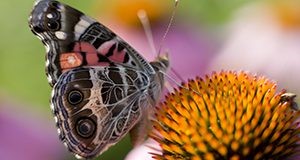Abstract
Population declines among bees, butterflies, and other pollinator insects are very worrying because 70% of the world’s food crop production depends upon these tiny insect workers. Fortunately, ninety million US households have yards, landscapes, or gardens that can enhance pollinator habitat and health. Consumers’ actions can drastically impact pollinator insects and even help them to recover. This 5-page fact sheet describes a new UF/IFAS study of consumers’ actions and perceptions as they considered ornamental plants that benefit pollinators. It covers consumers’ current actions to aid pollinators, their interest in purchasing plants to help pollinators, and their perceptions about plant availability, and it describes strategies for merchants and producers to cater to consumer preferences for in-store communications/promotions and help them to find and purchase plants that aid pollinator insects. Written by Hayk Khachatryan and Alicia Rihn, and published by the UF Department of Food and Resource Economics, October 2016.
References
Cox, W. 2012. "New US urban area data released." Retrieved from http://www.newgeography.com/conent/002747-new-us-urban-area-data-released
Fairbrother, A., J. Purdy, T. Anderson, and R. Fell. 2014. "Risks of neonicotinoid insecticides to honeybees." Environmental Toxicology and Chemistry 33:719-731. https://doi.org/10.1002/etc.2527
Frankie, G. W., R. W. Thorp, M. Schindler, J. Hermandez, B. Ertter, and M. Rizzardi. 2005. "Ecological patterns of bees and their host ornamental flowers in two northern California cities." Journal of Kansas Entomological Society 78:227-246. https://doi.org/10.2317/0407.08.1
Gallai, N., J. M. Salles, J. Settele, and B. E. Vaissiere. 2009. "Economic valuation of the vulnerability of world agriculture confronted with pollinator decline." Ecological Economics 68:810-821. https://doi.org/10.1016/j.ecolecon.2008.06.014
Hanley, N., T. D. Breeze, C. Ellis, and D. Goulson. 2015. "Measuring the economic value of pollination services: Principles, evidence, and knowledge gaps." Ecosystem Services 142:137-143. https://doi.org/10.1016/j.ecoser.2014.09.013
Kiesling, F. M., and C. M. Manning. 2010. "How green is your thumb? Environmental gardening identity and ecological gardening practices." Journal of Environmental Psychology 30:315-327. https://doi.org/10.1016/j.jenvp.2010.02.004
Klein, A. M., B. E. vaissiere, J. H. Cane, I. Steffan-Dewener, S. A. Cunningham, C. Kremen, and T. Tscharntke. 2007. "Importance of pollinators in changing landscapes for world crops." Proceedings of the Royal Society 274:303-313. https://doi.org/10.1098/rspb.2006.3721
Lusk, J. L., L. O. House, C. Valli, S. R. Jaeger, M. Moore, J. L. Morrow, and W. B. Traill. 2004. "Effect of information about benefits of biotechnology on consumer acceptance of genetically modified food: Evidences from experimental auctions in the United States, England, and France." European Review of Agricultural Economics 31:179-204. https://doi.org/10.1093/erae/31.2.179
National Gardening Association. 2009. "The impact of home and community gardening in America." In The impact of home and community gardening in America, edited by B. Butterfield (1.17). South Burlington, VT: National Gardening Association.
Yue, C., and B. K. Behe. 2008. "Estimating US consumers' choice of floral retail outlets." HortScience 43(3):764-769. https://doi.org/10.21273/HORTSCI.43.3.764

